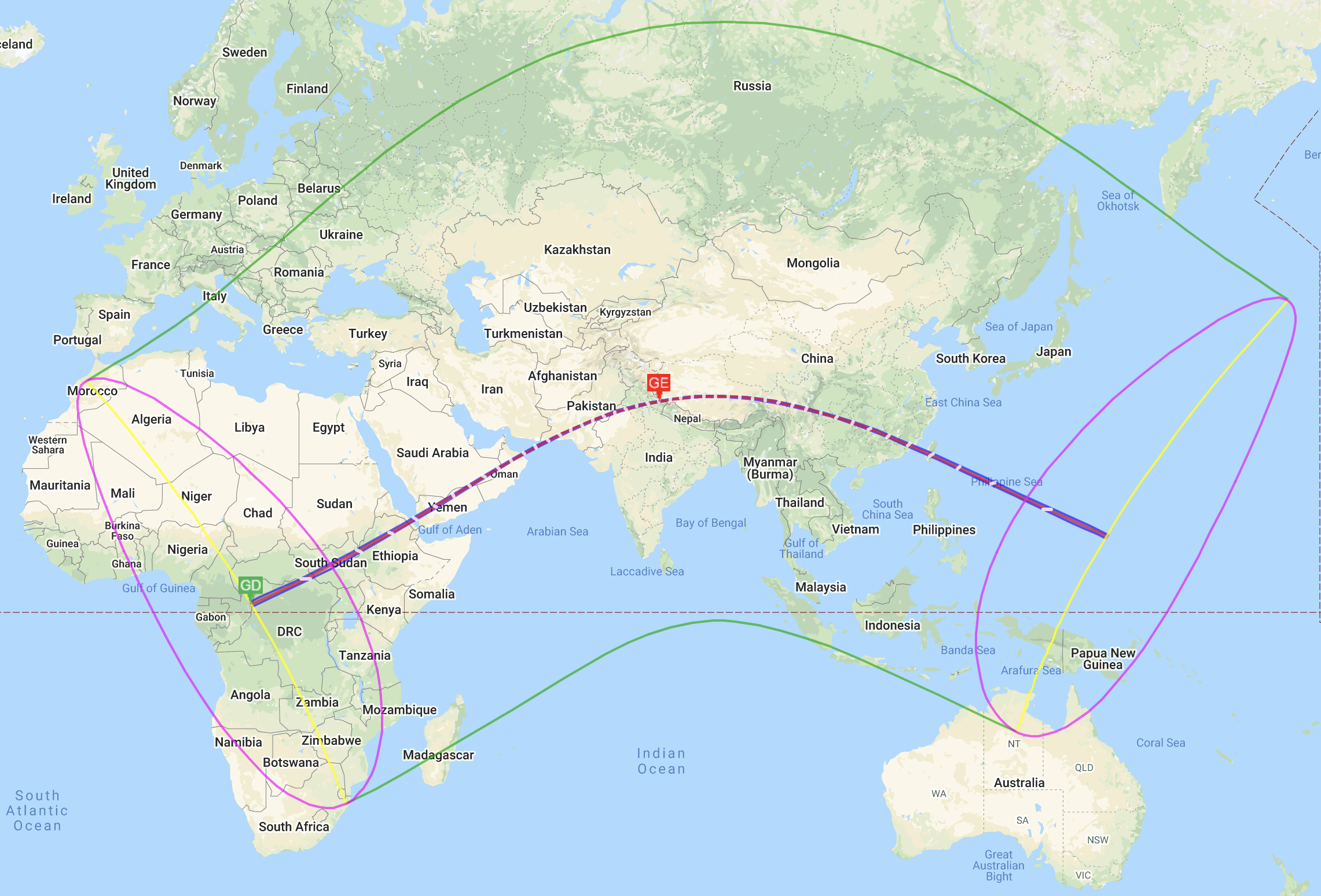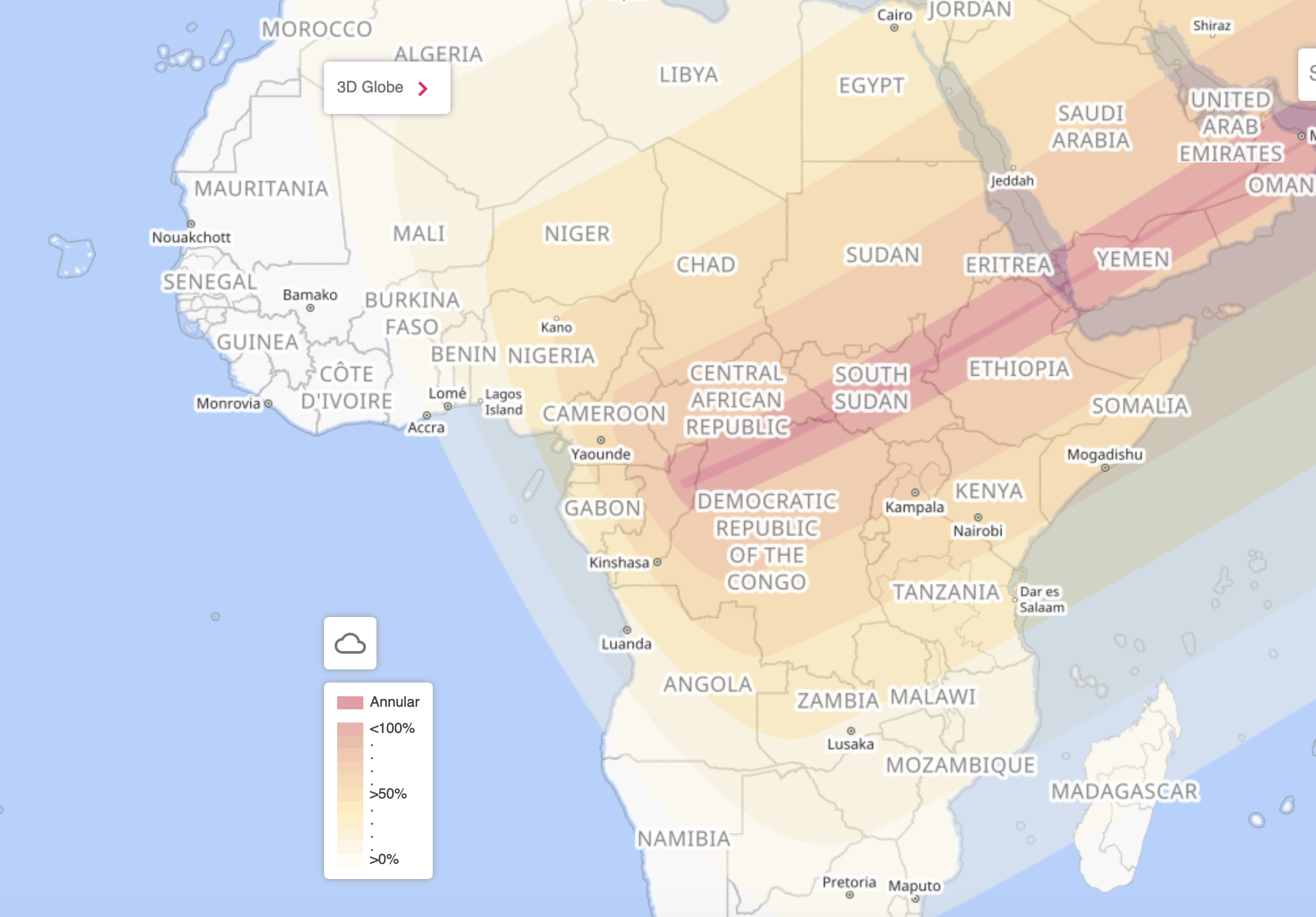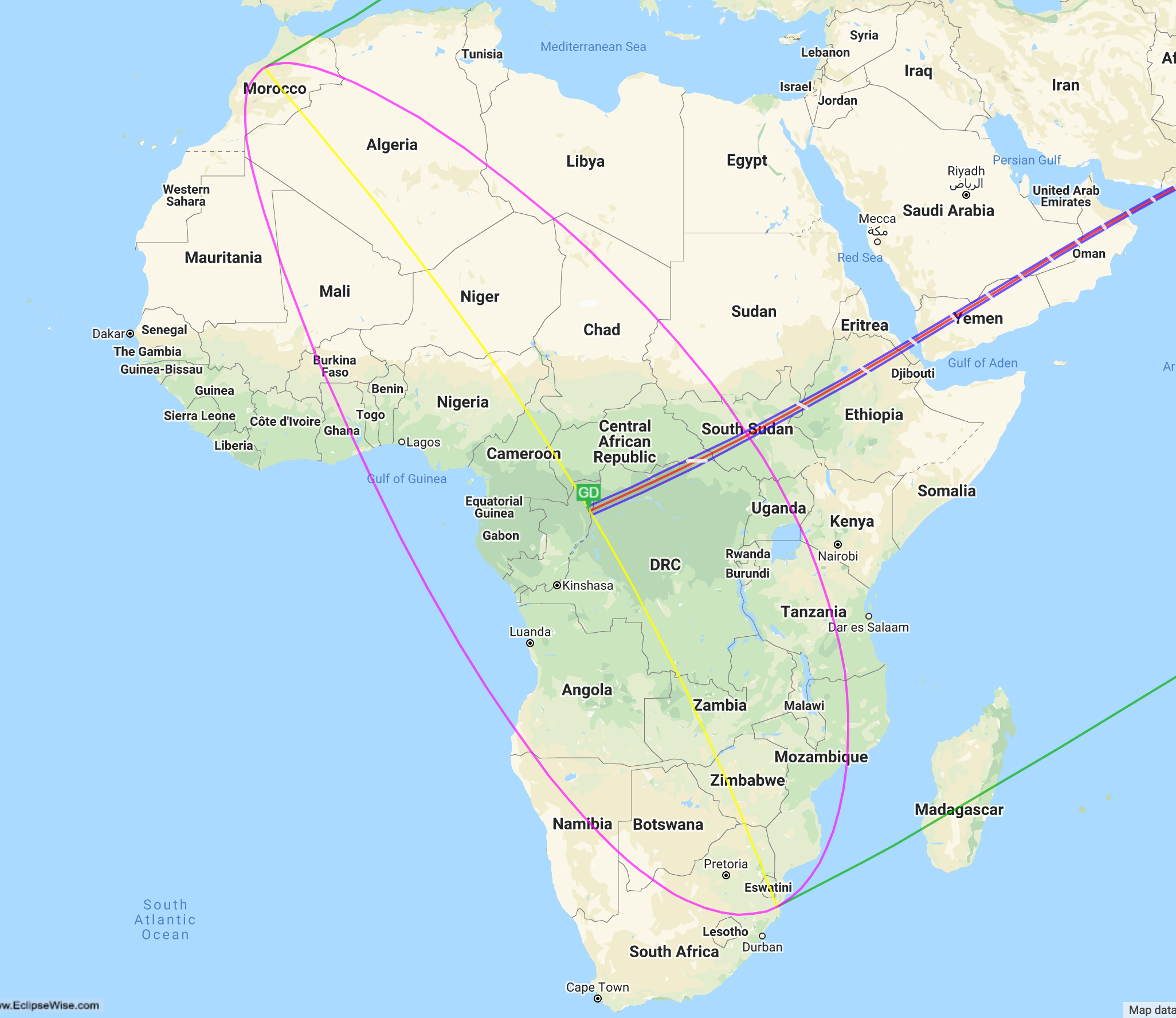THE 21 JUNE 2020 ECLIPSE – WHERE AND WHEN?
Interactive map at eclipsewise.com
Interactive map at timeanddate.com
The annular solar eclipse of 21 June 2020 will start in central Africa, cross over from eastern Africa to the Arabian peninsula and then to Asia. The path of annularity is about 60 km wide and starts from the Democratic Republic of the Congo, passing across Central African Republic, South Sudan, Ethiopia and Eritrea. It then passes over Yemen, Saudi Arabia, Oman, Pakistan, India, China and Taiwan to end in the Pacific Ocean. This annularity starts at the eastern part of the Democratic Republic of Congo at 4.48 GMT just at sunrise and ends in the Pacific Ocean at 8.32 GMT, covering an enormous distance of about 14000 km in just 3 hours and 45 minutes.

The central purple curve marks the path of annularity and the two green curves bracket the region where a partial eclipse can be seen. The farther away the location is from this path of annularity, less is the fraction of the sun’s disc that will be covered by the moon during maximum eclipse. For example, if you are inside the path of annularity in Ethiopia, you will see 97% of the sun’s surface covered during maximum eclipse, when the moon is exactly in the middle of the sun’s disc, causing the ring of fire. An obscuration of 97% in area means that 99% of the sun’s diameter is covered by the moon, and hence the amount of sunlight around you will be extremely low, with a corresponding reduction in temperature. The narrow ring might not have a uniform width along its edge due to the mountains and craters on the limb of the moon.
However, the fraction of the sun that will be covered by the moon during maximum eclipse decreases to 70% in central Sudan, Chad, southern Ethiopia and Kenya, about 35-50% in Libya, Egypt and Tanzania, and even less for regions farther away from the annular path. The colour shading in the image below shows the different extent of the maximum obscuration. Hence, it is better to be closer to the path of annularity to see a larger fraction of the sun obscured at mid-eclipse.

This is an early morning eclipse, and the more western regions will see the sun rising while being eclipsed, with the eclipse ending soon after. People in these regions need to have an unobstructed view of the eastern sky in order to catch the eclipse at sunrise. Let us examine the image below to understand whether your location will allow you to see a substantial part of the eclipse.
For locations within the magenta loop, the eclipse would have already started before sunrise. The yellow line in the middle of this loop, going from Morocco to Eswatini, marks the locations where the sun rises during maximum eclipse for that location. For locations inside the magenta loop that are to the left of the yellow line, the sun will rise only after the maximum eclipse is over. For locations inside the magenta loop that are to the right of the yellow line, the sun will rise before the maximum eclipse. For locations outside the magenta loop to the north-east, the eclipse will start only after sunrise. Hence the more north-east you are in the continent, the longer can you see the eclipse for.

It is therefore better if you are closer to the central path of annularity so that you can see a larger fraction of the sun eclipsed by the moon. It is also better if you are more towards the north-eastern parts of the continent so that you can see the eclipse for a longer duration after sunrise. Based on weather patterns in the past, it is expected that the least amount of cloud cover will be in Ethiopia during the morning of 21 June. This is why Lalibela in Ethiopia, with its famous rock-cut monolithic churches is best placed to see this eclipse from.
If all this sounds complicated, the easiest way to find out the eclipse timings for your location is by using one the interactive maps which tells you the details of the eclipse for any position you choose. Three of the most used maps are the following (please note that the timings may be given for different time zones):
Interactive map at eclipsewise.com

